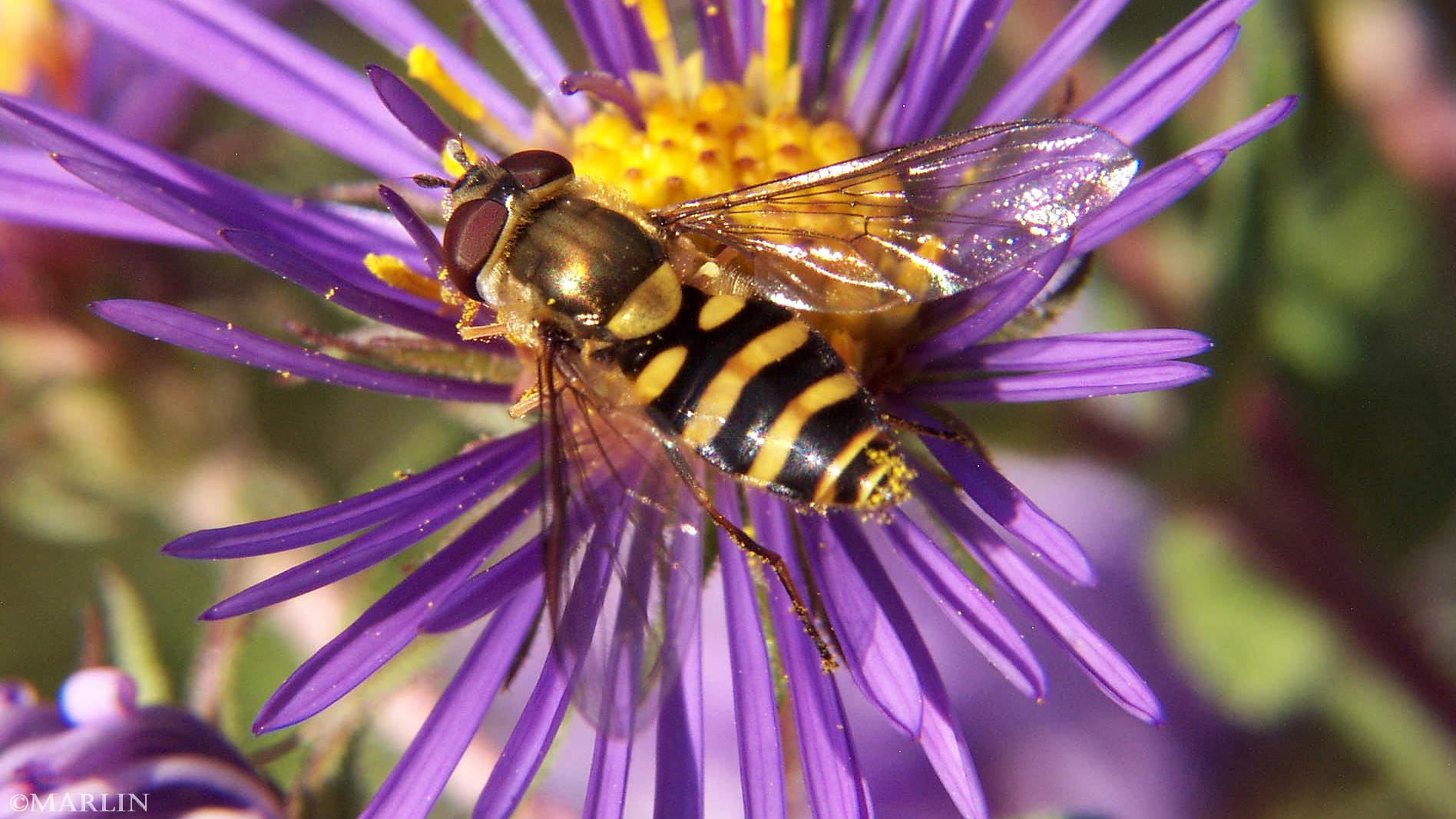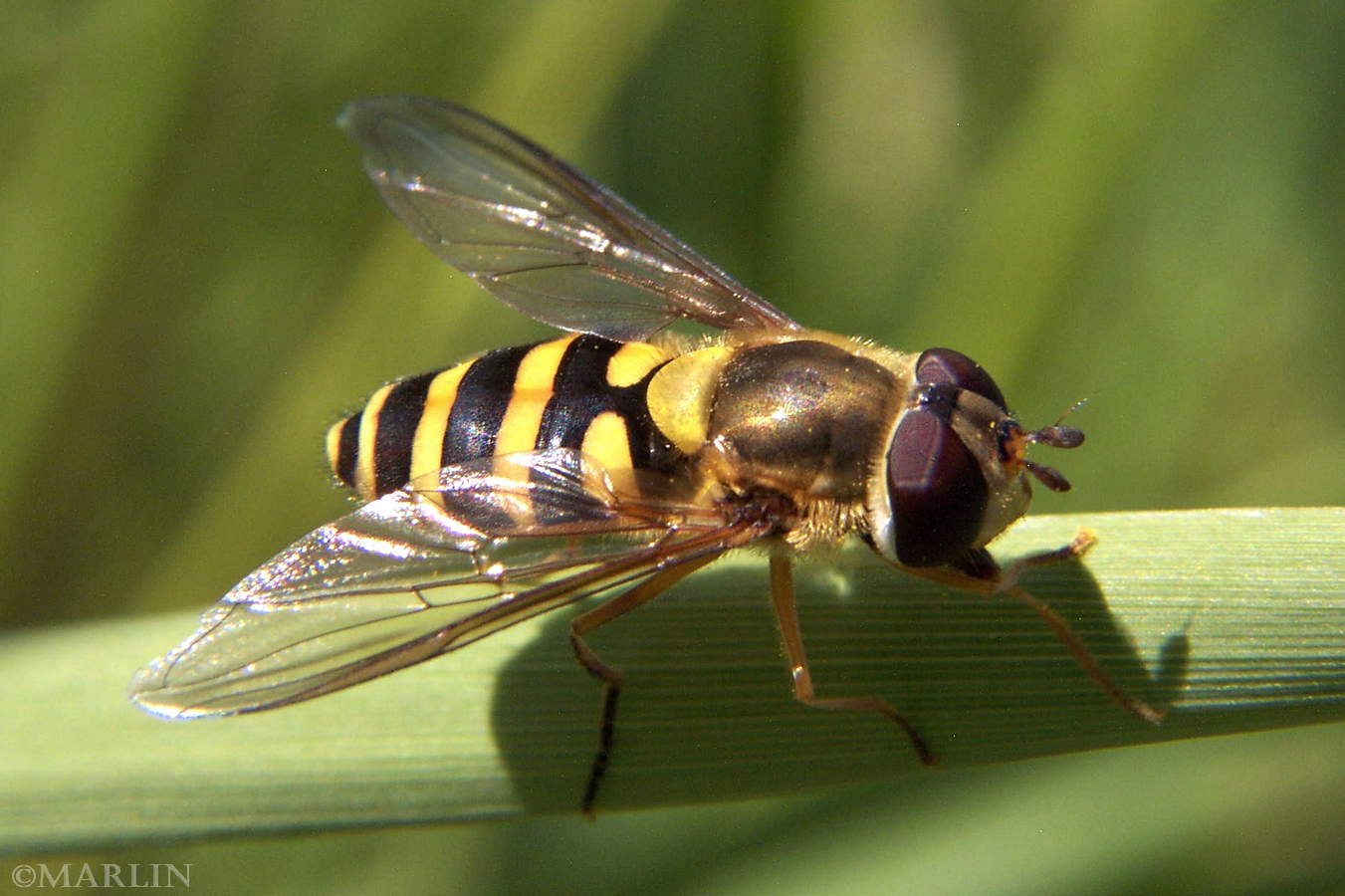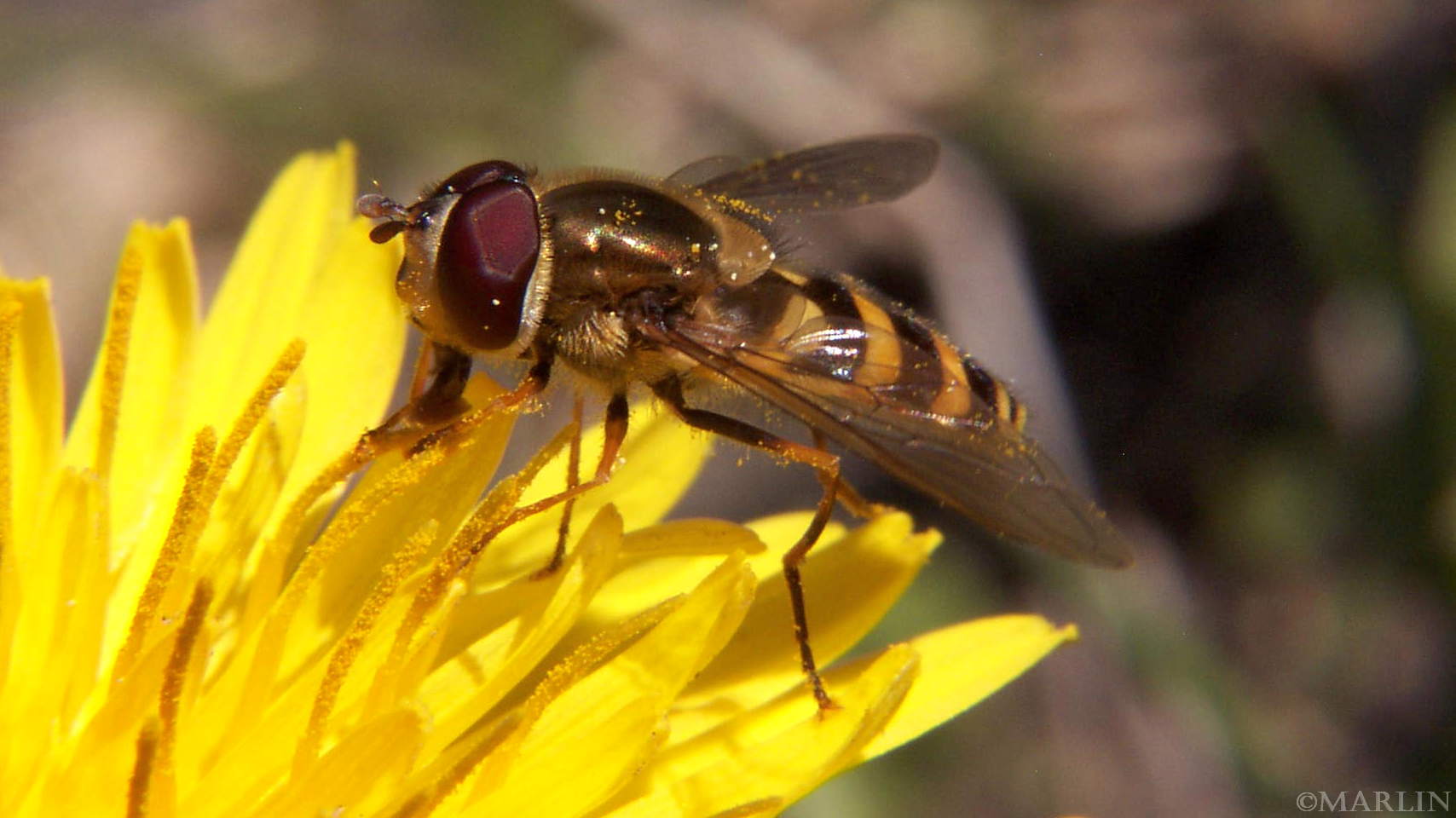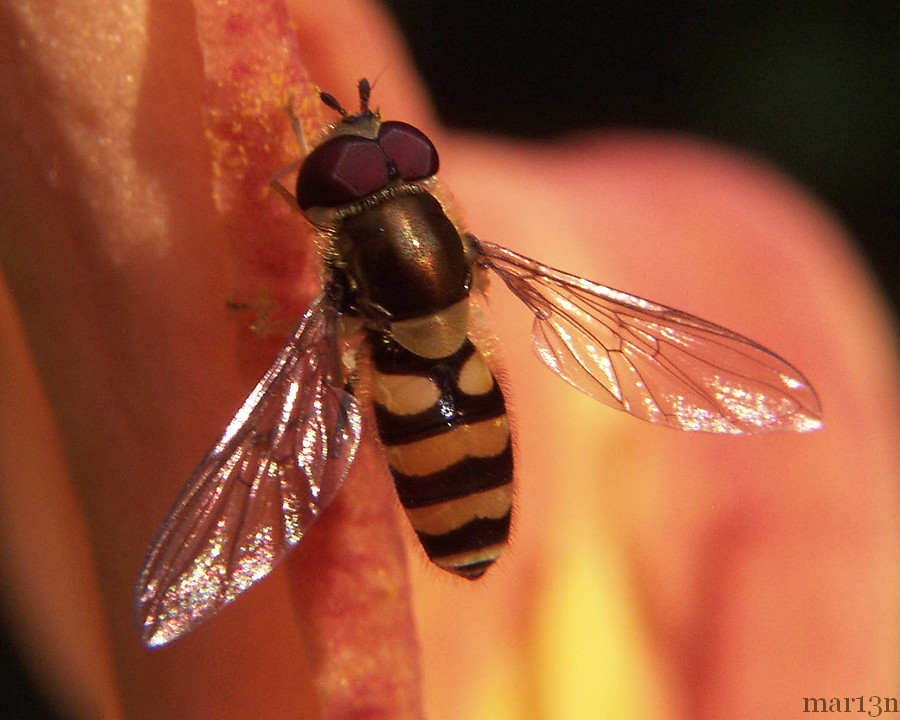Syrphid Fly – Metasyrphus americanus

Shown on New England aster
Family Syrphidae – Flower Flies, Hover Flies
Adult hover flies can generally be found hovering in midair or feeding at flower blossoms. They eat only nectar and pollen.

Most hover flies are between 5-20 mm long, brightly colored in yellow and black, and have large compound eyes that nearly cover the head.
Of course, being true flies, they have only one pair of wings, plus the characteristic halteres, or bulb-like organs that evolved from the second pair of flying wings.
In Syrphid flies, however, the halteres are fairly inconspicuous.

Adult flower flies require nectar or honeydew and pollen to ensure their reproduction (as well as to power their physical activities), and larvae generally require aphids for breakfast, lunch and dinner to complete their development.
However, in the absence of aphids, larvae of some species can subsist and develop entirely on diets of pollen [1].

Common aphidophagous flower flies in California vegetable crops include Toxomerus marginatus, Allograpta obliqua, Syrphus opinator among many others.
You can probably tell I love these flies. Before I started photographing insects back in the 1970s, I was only vaguely aware of these charming creatures – we called them “sweat bees” because we’d heard other people call them that. They are attracted to perspiration, that’s for sure.
Perhaps you have been assailed by these tiny flies lighting on your arms or hands – don’t freak out! They are not bees and they do not bite or sting. Relax and enjoy the tickle.

